In the worst-case scenario, millions could die from mistakes, and from a tweet, also.
“Just heard Foreign Minister of North Korea speak at U.N. If he echoes thoughts of Little Rocket Man, they won’t be around much longer!” – Trump tweeted.
It is not clear from Trump’s tweet if he was referring to Ri and Kim, or North Korea more broadly.
In an unprecedented direct statement on Friday, Kim described Trump as a “mentally deranged U.S. dotard” whom he would tame with fire. His comments came after Trump threatened in his maiden U.N. address on Thursday to “totally destroy” the country of 26 million people.
One thing is clear – i.e. nor North Korea, nor South Korea, nor the USA want to fight a nuclear war. No one. And yet, the leaders of the three countries are aware that such a war may come — if not by choice then by mistake. The world had already been in edgy moments on the Korean Peninsula three times so far, in 1969, 1994 and 2010 and each time, the parties went to the border of danger, peered into the abyss, and eventually stepped back. What if one of them stumbled, slipped over the edge and, grasping for life, dragged the others down into the darkness?
This is what might happen, based on public statements, intelligence reports and blast-zone maps.
MARCH 2019: For decades, North Korea had been provoking South Korea and both countries had come close to war in 2010 when a North Korean submarine’s torpedo sank a South Korean navy ship on 26 March and caused death of 46 sailors. Investigators said they had discovered part of the torpedo on the sea floor and it carried lettering that matched a North Korean design.
But Pyongyang rejected the claim as a “fabrication” and threatened war if sanctions were imposed. China has urged both countries to show restraint. South Korean President Lee Myung-bak pledged to take “stern action” against the North.
This time was different. No one thought President Moon Jae-in, a South Korean progressive known for his attempts to engage the North, would want blood. But nobody grasped how quickly accidental violence could take on its own urgent logic.
A North Korean defence spokesman said the country would “respond to reckless countermeasure with an all-out war of justice”, the state KCNA news agency reported.
Chinese foreign ministry spokesman Ma Zhaoxu said Beijing had “noted” the report and would make its own assessment, but called on both sides to exercise restraint.
The Cheonan went down near the disputed inter-Korean maritime border, raising tension between the two nations, which technically remain at war.
The shattered wreck of the 1,200-tonne gunboat was later winched to the surface, in two pieces, for examination. The investigation was led by experts from the US, Australia, Britain and Sweden. The team examined eyewitness accounts, damage to the vessel, evidence collected from the seabed and the injuries sustained by survivors and those who died.
It said: “The evidence points overwhelmingly to the conclusion that the torpedo was fired by a North Korean submarine. There is no other plausible explanation.”
South Korea and the US have announced that their annual military drills will begin on 2 March – a move that will anger Pyongyang. The exercises, called Key Resolve and Foal Eagle, always generate tension on the Korean peninsula. Seoul and Washington call the drills defensive in nature. North Korea calls them a rehearsal for invasion.
Kay Resolve is a largely computer-simulated exercise and lasts 12 days and Foal Eagle lasts eight weeks and it involves tens of thousands of troops, with air, sea and ground components.
In a statement, the two nations’ Combined Forces Command said North Korea had been informed of the exercises.
South Korea had canceled the 2018 exercise to avoid upsetting the North before the Winter Olympics in PyeongChang. To make up for the lost year, the 2019 drill was larger than ever.
North Korean Air Force fighters shot down a US Navy EC-121 surveillance aircraft over international airspace on 15 April 1969, leader Kim Il Sung’s birthday. All 31 servicemen aboard were killed. The US Navy aircraft had been flying over the Sea of Japan some ninety miles off the North Korean coast when MiG-17 fighters attacked it.
Trump’s tweet was an idle Twitter threat — Trump hadn’t yet been briefed about the missile strike, and it hadn’t yet been discussed on “Fox & Friends.” But how would Kim Jong Un know that? To him, with U.S. forces lurking nearby and South Korean missiles slamming into his military sites, the meaning of Trump’s tweet seemed clear: Trump was now using the shoot down as a pretext for the invasion he had wanted all along.
Nuclear weapons program in North Korea had been begun by Kim’s grandfather, Kim Il Sung, decades before. At the time he had concluded, according to defectors who testified before the U.S. Congress, that Saddam Hussein had made a huge mistake in 1991. He just sat back and watched the United States build up a massive invasion force. His son and grandson had watched Hussein dragged out of a spider hole and later hanged following the 2003 U.S. invasion of Iraq. They had also seen videos of Moammar Gaddafi’s gruesome death in Libya at the hands of rebels supported by U.S. airpower. Each had made up his mind that, as soon as the United States moved to remove the Kim family from power, he would order the Strategic Rocket Force of the Korean People’s Army to fire nuclear-armed short- and medium-range missiles at U.S. forces throughout South Korea and Japan. Kim Jong Un hoped that the sudden attack would impose tens of thousands of casualties, blunting the invasion force and stunning a casualty-averse American public. It was a desperate gamble, but doing nothing meant certain death.
For what he believed was a massive American military invasion, Kim gave the order. The thread of history winds along on twists of fate, like Archduke Ferdinand’s driver missing a turn.
In the past, North Korea tested all its No-dong missiles out of a single military test site near a village of the same name. These tests were designed to demonstrate that the Scud and No-dong missiles worked. They were tests in the literal sense of the word.
In recent years, however, North Korea has started launching Scuds and No-dongs from different locations all over the country. These aren’t missile tests, they are military exercises. North Korea knows the missiles work. What the military units are doing now is practicing — practicing for a nuclear war.
Last year, North Korea tested a No-dong missile. Afterward, they published a map showing that the missile was fired to a point at sea that was the exact range as South Korea’s port city of Busan, with an arc running from the target into the ocean, down to Busan. In case you missed the map, the North Koreans spelled it out: “The drill was conducted by limiting the firing range under the simulated conditions of making preemptive strikes at ports and airfields in the operational theater in South Korea where the U.S. imperialists’ nuclear war hardware is to be hurled.”
This time, North Korea launched four “extended-range” Scud missiles that are capable of flying up to 620 miles. The map showed all four missiles landing on an arc that stretched down to the Marine Corps Air Station near Iwakuni, Japan.
For years, North Korean missile units had rehearsed this very scenario, using nuclear weapons to butcher enemy’s troops as they slept in their barracks or as they arrived at ports and airfields.
However, in 2017 it wasn’t an exercise. The U.S. intelligence community had assessed that North Korea had as many as 60 nuclear warheads and was adding about 12 a year. The had ‘slightly’ missed the number because Kim did not have 72 nuclear weapons. He had ‘only’ 48.
Expert Jeffrey Lewis published in a Foreign Policy article:
“These aren’t missile tests, they are military exercises. North Korea knows the missiles work. What the military units are doing now is practicing—practicing for a nuclear war.”
The Strategic Rocket Forces used 36 of them in the first wave. These missiles were largely extended-range Scuds and longer-range Nodongs. The launches looked exactly like the military exercises that the North Koreans had publicized year after year.
The main targets were in South Korea and Japan i.e. urban areas. Yongsan Garrison, for instance, was in the heart of Seoul. The Port of Busan, another important target, was in South Korea’s second-largest city. In Japan, many U.S. bases were concentrated in and around metropolitan Tokyo — Yokota and Atsugi air bases, Yokosuka naval base. Marine Corps Air Station Iwakuni, about 20 miles from Hiroshima, was also targeted.
Some of these missiles broke up in flight, failing to reach their targets. U.S. officials later claimed that the missiles were interrupt by American and South Korean missile defenses — although numerous experts disagree that. Since all the drills have been monitored, observers had warned that the effectiveness of missile defense was being exaggerated. Trump had told reporters in 2017 that Japan and South Korea could “easily shoot out of the sky, just like we shot something out of the sky the other day in Saudi Arabia, as you saw.” In fact, Saudi and U.S. officials knew that the defense had failed to stop that warhead, which narrowly missed hitting an airport.
A lot of North Korean missiles actually did miss their targets in South Korea and Japan by a few kilometers. But these were fission devices, with yields similar to the nuclear weapons that destroyed Hiroshima and Nagasaki, and the bombs that fell off target still inflicted massive damage on urban areas. The blasts leveled buildings and were followed by massive firestorms that consumed large areas of Seoul, Busan and Tokyo. For at least a few hours, the North Koreans were able to follow the nuclear attack with waves of conventional missiles and long-range artillery. People would remark on the heroism of the surviving firefighters trying desperately to extinguish the flames as missiles, some armed with chemical weapons, continued to rain down on them. The suffering would play out over many days, as survivors, afflicted with acute radiation sickness, picked their way through the rubble to die at home. As it had been in Hiroshima and Nagasaki in 1945, the infrastructure to provide medical care was overwhelmed.
US Defence Secretary Jim Mattis said the threat of nuclear missile attack by North Korea is accelerating. In remarks in Seoul with South Korean Defence Minister Song Young-moo at his side, Mattis accused the North of illegal and unnecessary missile and nuclear programmes — and vowed to defeat any attack.
He added that regardless of what the North might try, it is overmatched by the firepower and cohesiveness of the decades-old US-South Korean alliance.
“North Korea has accelerated the threat that it poses to its neighbours and the world through its illegal and unnecessary missile and nuclear weapons programme,”
he said, adding that US-South Korean military and diplomatic collaboration thus has taken on “a new urgency.”
“I cannot imagine a condition under which the United States would accept North Korea as a nuclear power,” he said.
While he accused the North of “outlaw” behaviour, he did not mention that President Donald Trump has ratcheted up his own rhetoric. In August, Trump warned the North not to make any more threats against the United States, and said that if it did, it would be met with “fire and fury like the world has never seen.”
Song, the South Korean minister, stated that he and Mattis agreed to further cooperation on strengthening Seoul’s defence capabilities, including lifting warhead payload limits on South Korean conventional missiles and supporting the country’s acquisition of “most advanced military assets.”
The Hwasong-12 first appeared in North Korea’s “Day of the Sun” parade on April 15th, 2017. It was speculated at the time that it could be a shortened version of North Korea’s untested KN-08 ICBM. The missile was carried on a vehicle previously associated with the BM-25 Musudan IRBM. 1 Evidence from the missile’s first test launch on May 15th, however, indicates a single-stage design.
North Korea has flight tested the Hwasong-12 at least six times, achieving three successful flights and three failures.
The first test of the Hwasong-12 occurred on April 5th, 2017, when the missile was launched from Sinpo in the South Hamgyong province of North Korea. According to U.S. Pacific Command, the missile flew a distance of 60 km and reached a height of 189 km before starting to “pinwheel,” landing into the Sea of Japan after 9 minutes of flight time.
The second suspected launch occurred on April 16th, 2017 from the same base in Sinpo and was also considered to be a failure, blowing up just seconds after launch. 4
The third suspected Hwasong-12 test occurred on April 29th , 2017. The missile is presumed to have launched from Pukchang airfield and flew approximately 35 km before crashing. 5
The first successful Hwasong-12 test occurred on May 15th, 2017 from a location near the the city of Kusong. The missile was transported on a what appeared to be Musudan transporter-erector launcher (TEL). Rather than directly fired from the TEL, however, it was placed onto a platform for the launch.

On September 15th, North Korea carried out its sixth (third successful) Hwasong-12 test, again flying the missile over the northern Japanese island of Hokkaido. Launched from Sunan just north of Pyongyang, the missile flew for 19 minutes, traveling 3,700 km, reaching an altitude of 770 km, and landing 2,200 km off the east coast of Japan in the Pacific Ocean. Unlike previous tests, the missile was fired directly from a TEL, rather than from a concrete platform. This could indicate North Korea’s growing confidence in the Hwasong-12’s reliability.
Kim did not use nuclear weapons against the U.S. homeland. His strategy was to halt the invasion and shock Trump. He knew he had 12 longer-range missiles in reserve, massive intercontinental ballistic missiles like the Hwasong-15 that North Korea began testing in late 2017 and that could deliver the North’s powerful new thermonuclear weapons. If Trump continued to threaten Kim’s hold on power, or if he and his family were to die at the hands of the Americans, Kim was determined that these missiles would strike the United States mainland.
The United States, of course, had a missile defense system in Alaska, along with a small number of interceptors in California. But the system was sized to deal with only 11 missiles. As it was, two-thirds of the North Korean missiles reached their targets.
The U.S. Missile Defense Agency (MDA) said a U.S. warship successfully shot down a medium-range ballistic missile in a test off Hawaii, as North Korean leader Kim Jong Un vowed to press ahead with more missile tests in the Pacific. MDA Director Lt. Gen. Sam Greaves said the test marked a “key milestone.”
“We will continue developing ballistic missile defense technologies to stay ahead of the threat as it evolves,” Greaves said in a statement.
The remaining seven nuclear warheads landed in the United States. These missiles were no more accurate than the others — but with 200-kiloton warheads, 10 times the power of the bomb that destroyed Hiroshima, close was enough to count in most cases. Pearl Harbor took a direct hit with a single weapon, while San Diego was lucky: Both of the missiles aimed there failed to arrive.
One warhead hit Manhattan — which North Korea’s state media had specifically mentioned as a target of its long-range missiles — while the two missiles pointed at Washington struck the Northern Virginia suburbs. The other two missiles fell wildly off course, detonating in the ocean or in rural, sparsely populated areas.
In the next couple hours, Trump was informed that Kim had been killed by allied airstrikes. This was not true, but North Korea’s government had collapsed. Later, as U.S. and South Korean forces combed through the Pyongyang suburbs, they would find Kim in a bunker, dead by his own hand.
The direct hit on Manhattan killed more than 1 million people. An additional 300,000 perished near Washington. The strikes on Jupiter and Pearl Harbor each killed 20,000 to 30,000. These were just estimates; the scale of the destruction defied authorities’ ability to account for the dead. Hundreds of thousands perished in South Korea and Japan from the combination of the blasts and fires.
It would be years before the U.S. government could provide an accounting of the toll. The Pentagon would make almost no effort to tally the enormous numbers of civilians killed in North Korea by the massive conventional air campaign. But in the end, officials concluded, nearly 2 million Americans, South Koreans and Japanese had died in the completely avoidable nuclear war of 2019.
Source: washingtonpost.com




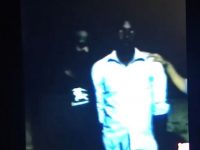






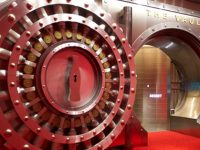









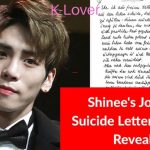

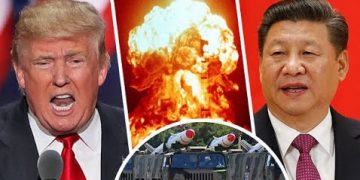
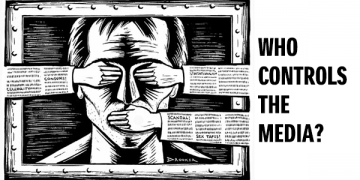

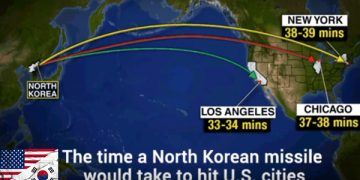

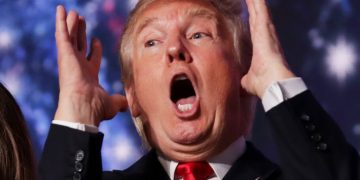
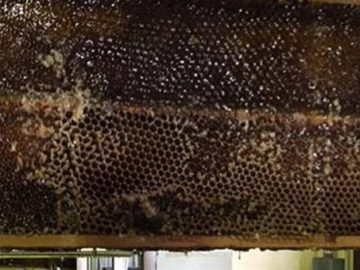


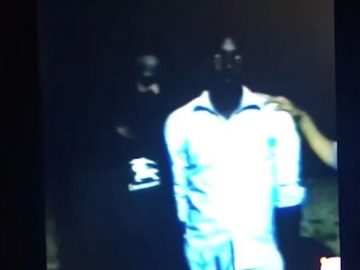



Connect with us